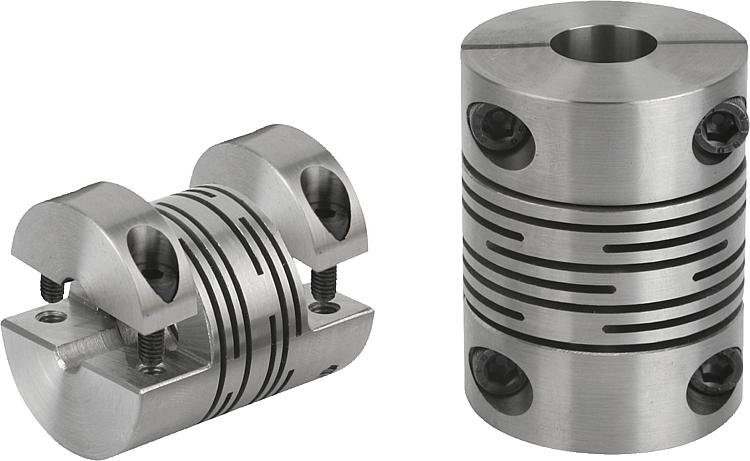“`html

Introduction to Beam Coupling
Beam couplings, also known as helical couplings, are mechanical devices designed to transmit torque between two shafts while accommodating for misalignment, end movement, and other mechanical variations in the system. These couplings are essential components in various applications, including network infrastructure, where precision and reliability are paramount.
Key Features of Beam Coupling
- High Flexibility: Beam couplings offer exceptional flexibility, allowing for angular, parallel, and axial misalignments between connected shafts without significant loss of transmitted torque.
- Torsional Stiffness: Despite their flexibility, they maintain a high degree of torsional stiffness, ensuring accurate transmission of rotational movement.
- Zero Backlash: These couplings provide zero backlash operation, which is crucial for precision applications in network infrastructure, such as in servers and data centers.
Applications and Advantages
Beam couplings are ideally suited for applications in network infrastructure due to their unique features and benefits. Here are five key advantages:
- Alignment Tolerance: The ability of beam couplings to compensate for misalignment ensures smooth and reliable operation in network systems, where precision alignment is challenging.
- High-Speed Operation: These couplings can operate at high speeds without compromising performance, essential for the fast-paced environment of data transmission and processing.
- Durability: Beam couplings are designed to withstand the rigors of continuous operation, making them durable components of network infrastructure.
- Maintenance-Free: With no moving parts, beam couplings require minimal to no maintenance, reducing downtime and operational costs.
- Vibration Damping: They help in damping vibrations and noise, promoting a more stable and quiet operation in sensitive network equipment.

Working Principle of Beam Coupling
Beam couplings operate by employing a helical cut pattern along their length, which allows the coupling to flex under misalignment conditions, transmit torque, and also absorb vibrational energy. This helical design provides the dual benefit of maintaining torque transmission under misaligned conditions and introducing flexibility without compromising torsional stiffness.
As torque is applied, the helical beams of the coupling flex, accommodating misalignment while transmitting the rotational force from one shaft to the other. The unique geometry of the helix design is critical in managing the balance between flexibility and torsional stiffness.
The absence of moving parts in a beam coupling not only reduces maintenance but also eliminates the risk of backlash, ensuring precise and reliable operation in critical applications such as network infrastructure.

Choosing the Right Beam Coupling
Selecting the appropriate beam coupling involves considering several key factors to ensure optimal performance and longevity. Here are five crucial considerations:
- Torque Requirements: Identify the torque capacity needed for your application to select a coupling that can handle the load without overstraining.
- Misalignment Tolerances: Evaluate the type and degree of shaft misalignment in your system to choose a coupling with adequate flexibility.
- Operational Speeds: Consider the operational speed range and select a coupling designed to perform efficiently within those limits.
- Size and Space Constraints: Assess the installation space to ensure the selected coupling fits without interfering with other components.
- Environmental Conditions: Account for the operating environment, such as temperature and exposure to chemicals, to choose a coupling made of compatible materials.
Maintenance of Beam Coupling
Maintaining beam couplings involves regular inspections to ensure they are free from dirt and debris, which could affect their performance. Although these couplings are generally low maintenance, checking for signs of wear or damage is crucial for preventing unexpected failures. The importance of maintenance lies in prolonging the life of the coupling and ensuring consistent, reliable performance in critical network infrastructure applications.
About HZPT
HZPT, established in 2006, is a professional manufacturer and exporter specializing in the design, development, and production of couplings. With our dedicated design and R&D team of 16 years, we cater to global clients’ custom requirements and boast a comprehensive quality detection system from raw materials to finished products. All our products are CE and TUV certified, emphasizing our commitment to quality and customer satisfaction. Our philosophy revolves around quality for survival and reputation for development, offering high-quality, competitively priced products with a complete range of models. Choosing HZPT means opting for the best service, top product quality, and a partnership renowned across Europe and America. We look forward to cooperating with new clients worldwide and establishing successful business relationships in the near future.
“`
